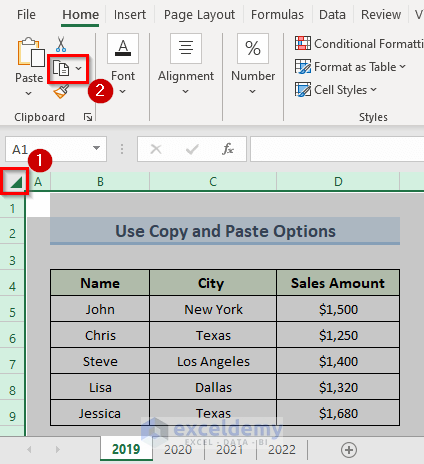5 Excel Formulas to Calculate Pressure Easily

Pressure is a key concept in physics and engineering, crucial for fields like meteorology, mechanical engineering, and fluid dynamics. Excel can be a powerful tool for pressure calculations, enabling you to perform complex computations without the need for sophisticated software. Here, we'll explore five Excel formulas that make calculating pressure easy and efficient, regardless of whether you're a student, a professional engineer, or just someone curious about how pressure works.
1. Hydrostatic Pressure

Hydrostatic pressure is the pressure exerted by a fluid (liquid or gas) at rest due to gravity. This is particularly relevant in plumbing, hydraulic systems, and understanding ocean depths. The formula in Excel for hydrostatic pressure is:
=DENSITY * G * DEPTH- DENSITY: The density of the fluid in kg/m³.
- G: Acceleration due to gravity, roughly 9.81 m/s² on Earth.
- DEPTH: The depth at which the pressure is being calculated, measured in meters.
To implement this in Excel:
=B2 * 9.81 * C2where B2 contains the density value, and C2 contains the depth.
📝 Note: Remember that this formula assumes the fluid is incompressible and gravity is constant at the Earth's surface.
2. Gauge Pressure

Gauge pressure is the pressure relative to atmospheric pressure. It's frequently used in industrial processes and engineering applications. Here's how you can calculate it:
=TOTAL_PRESSURE - ATMOSPHERIC_PRESSURE- TOTAL_PRESSURE: The absolute pressure at a specific point.
- ATMOSPHERIC_PRESSURE: The pressure at the Earth's surface, approximately 101.3 kPa or 14.7 psi.
To use this in Excel:
=B2 - 101.3where B2 holds the total pressure value. To calculate in PSI, use:
=B2 - 14.7💡 Note: This formula is useful when you need to measure pressure relative to the ambient pressure, such as in pressure vessels.
3. Vapor Pressure

The vapor pressure of a liquid is the pressure exerted by its vapor when it is in equilibrium with its liquid phase at a given temperature. The Antoine equation can be used for this calculation, but Excel can simplify it:
=10^(A - (B / (C + TEMPERATURE)))- A, B, C: Constants specific to each substance. For water, these are typically 8.07131, 1730.63, and 233.426.
- TEMPERATURE: The temperature at which vapor pressure is calculated, in degrees Celsius.
In Excel, you would use:
=10^(8.07131 - (1730.63 / (233.426 + C2)))where C2 contains the temperature value.
4. Pressure Drop in a Pipe

Calculating pressure drop in a pipe due to friction is crucial in fluid mechanics. The Darcy-Weisbach equation can be used here:
=f * (L / D) * (V^2 / (2 * G))- f: Friction factor (dimensionless).
- L: Length of the pipe, in meters.
- D: Diameter of the pipe, in meters.
- V: Average velocity of fluid in m/s.
- G: Acceleration due to gravity, roughly 9.81 m/s².
Here's how to calculate it in Excel:
=B2 * (C2 / D2) * (E2^2 / (2 * 9.81))where B2 is friction factor, C2 is length, D2 is diameter, and E2 is velocity.
5. Ideal Gas Law

The Ideal Gas Law relates the pressure of a gas to its volume, temperature, and the number of moles. The formula in Excel is:
=R * T * n / V- R: Ideal gas constant (8.314 J/(mol·K)).
- T: Temperature in Kelvin.
- n: Number of moles of gas.
- V: Volume of the gas in cubic meters.
To calculate pressure in Excel:
=8.314 * C2 * D2 / E2where C2 is temperature, D2 is number of moles, and E2 is volume.
🌡 Note: The Ideal Gas Law assumes that the gas behaves ideally, which is an approximation for many real gases at low pressures and high temperatures.
Through these formulas, Excel provides an accessible platform for performing pressure calculations. From understanding hydrostatic pressure in hydraulic systems to predicting vapor pressures or ensuring proper pipe sizing, these tools help bridge the gap between theoretical concepts and practical applications.
Whether you're designing a pressure tank, analyzing meteorological data, or simply exploring the physics behind your coffee machine, these formulas give you a practical means to delve deeper into the world of pressure. They empower students and professionals alike to make informed decisions, optimize systems, and enhance efficiency, making everyday pressure calculations not just accurate but also insightful.
Can Excel handle complex pressure calculations for industrial use?

+
Yes, Excel can manage complex pressure calculations, especially with the use of VBA for automation or add-ins that increase its computational capabilities. For industrial applications, however, ensuring the accuracy of constants and considering all variables remains crucial.
What are some common mistakes to avoid in pressure calculations?

+
Mistakes often include using the wrong units, neglecting temperature or volume changes, and not accounting for real gas behavior. Always double-check units, verify the fluid type, and consult engineering resources for accurate constants and corrections.
How accurate are Excel calculations for pressure?

+
Excel’s accuracy for pressure calculations depends on the input data’s precision, the formulas used, and the inherent limitations of the software. For most engineering applications, Excel provides adequate accuracy, but for high-precision requirements, specialized software might be necessary.



